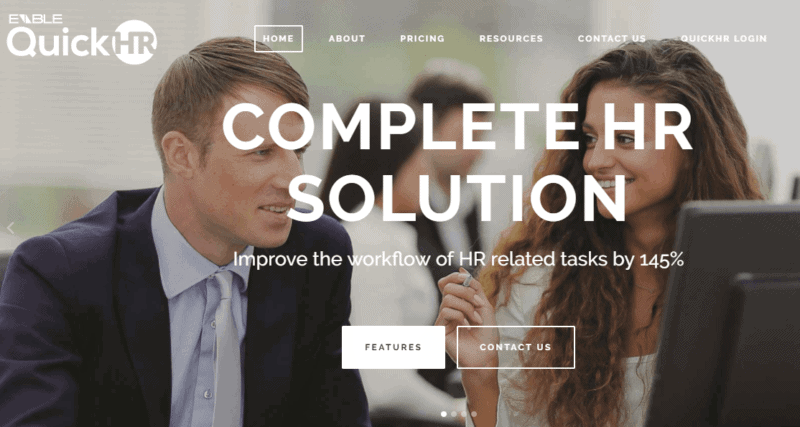It is painful to watch.
The excel sheet that has held payroll data since the company’s inception decades ago is so bloated that the time taken to open the file could allow one to make a cup of coffee, finish it up and make another.
And that’s just the beginning as it will take at least half a day to process the fifty employees payroll as new rows are created and formulas are pasted.
It is the year 2017. We don’t have hoverboards, and payroll processing is still done on excel sheets.
That, unfortunately, is the state of HR in many SMEs (the payroll part, not the hoverboards).
HR Automation = Save $$
I’m not going to blabber about why HR needs to be strategic. I’ll leave that to another overseas HR guru who will help us point out the obvious.
Instead, I’m going to be pragmatic and break down the costs savings that are associated with HR automation.
On average, 50% of an HR department’s time is spent processing employee information and answering queries.
Given that smaller SMEs may not even have a dedicated HR resource, automating time-consuming HR processes can help alleviate the strain on productivity.
So how does adding in automation help the HR department save $$?
1. Compliance with government regulations and fewer calculation errors
It would be unbelievable if anyone tells you that there are zero payroll processing errors over decades of using an excel spreadsheet.
Without any specific checking mechanism, it is almost impossible not to make any mistakes whether they are intentional or not.
Add that to legislative changes in CPF % and the mandatory requirements of payslips, processing payroll manually is akin to taking the stairs up Swissotel Hotel when a lift can zoom you straight up effortlessly.
2. Save trees (and stationery costs)
Receipts glued to the back of recycled paper pinned behind a summary list that you have to fill up.
Such end-of-month event is such a huge waste of time as the entire company shuts down from work and become art-and-craft students over half a day.
It might take even longer for the sales department as they spend time searching for their parking and petrol receipts.
Just like any Jack Neo movie, this is just part one. Part two involved hunting down your reporting officer to get that precious approval signature.
With the convenience offered by the internet, today’s workforce can simply take a picture of their claim receipt and enter the claims details via a browser or phone app.
3. Frees HR for more important stuff
With people being the most important asset, it is a no-brainer for HR department to be more strategic on their work.
There have been dozens of white papers, speeches, seminars on why HR should be strategic.
But all that is truly motivating until reality sinks in back at the office and the same person goes back to his or her lonely corner with a calculator and timesheets.
Only by freeing up time, can HR have the bandwidth to undertake more significant matters such as improving staff morale, building retention and increase the productivity of employees.
QuickHR
And that was the consideration for the birth of QuickHR.
Founded by Sukhveer Bajaj, a business consultant who had come across too many clients who faced all sorts of HR problems with no holistic solutions.
Even for those who already have something, the rigidity makes them almost non-functional.
Considering the fact that SMEs run their businesses differently with unique policies and culture, Sukheer came up with QuickHR to provide the level of customization that isn’t available in most off-the-shelf HR systems.
QuickHR is a cloud-based HR system that can handle company’s employee database, process leaves, claims, pay roll and generate reports. It is available for use on all operating systems such as Windows or Mac and on mobile apps for Android and iOS.
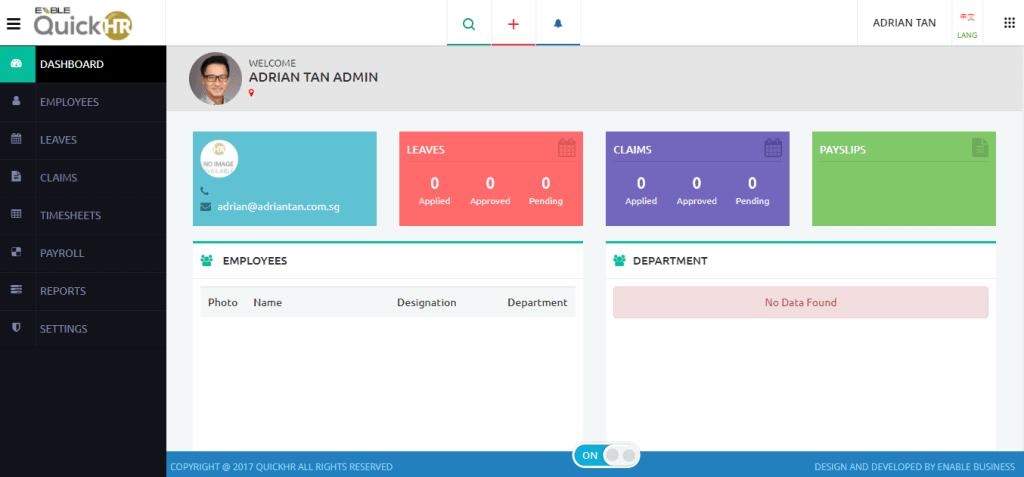
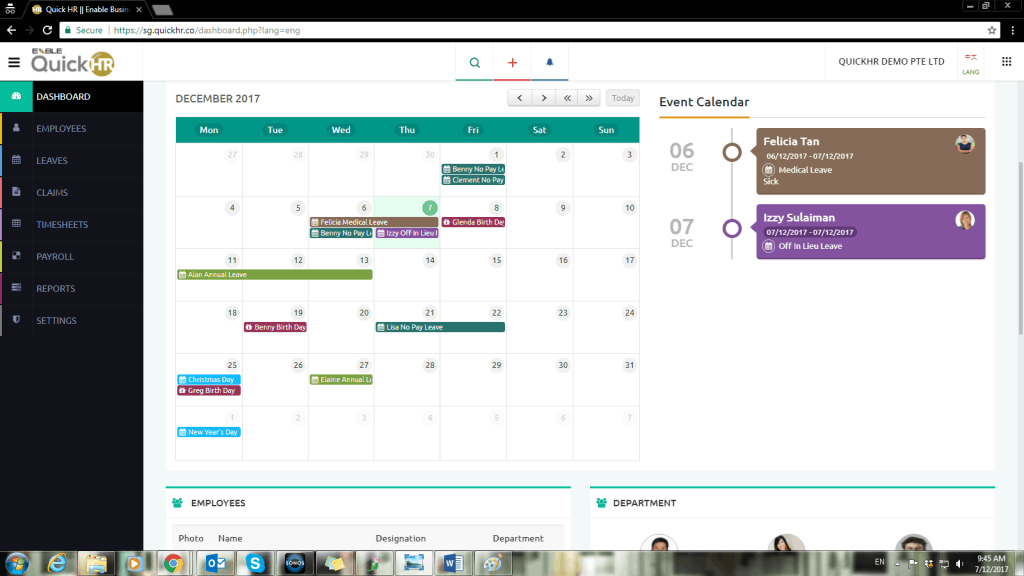
The dashboard is really clean and simple and provides an easy overview of what you can expect from the system. You can also customize widgets that are only relevant to you.
You can get an overview of your employees’ license expiry dates, passport, identification cards or work permit details as well as upcoming training courses all on calendar view on your dashboard.
While the panel on the top right includes a function for users to alternate between English or Mandarin interface, the panel on the left allows you quick access to specific modules which include:
- Employees
- Leaves
- Claims
- Timesheets
- Payroll
- Reports
- Settings
Each module allows the Admin user easy access to the next level of sub-options.
It might not sound like much but given the number of HR systems I had used before, this is like iOS versus Symbian.
Many IT vendors just don’t give a shit about user experience, and many users just don’t want to read an encyclopaedia to learn how to use a system.
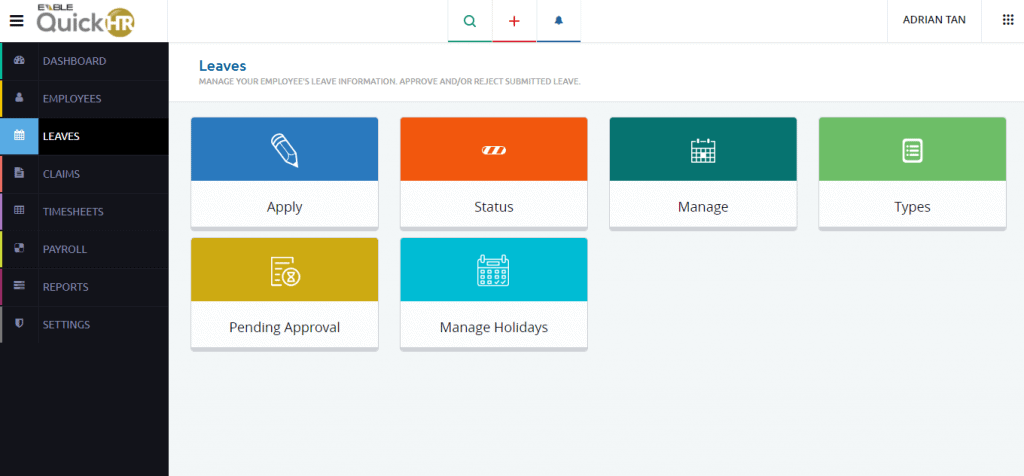
Submitting claims is no longer a monthly dreaded event. Employees can easily login to the portal and enter their data together with the supporting document.
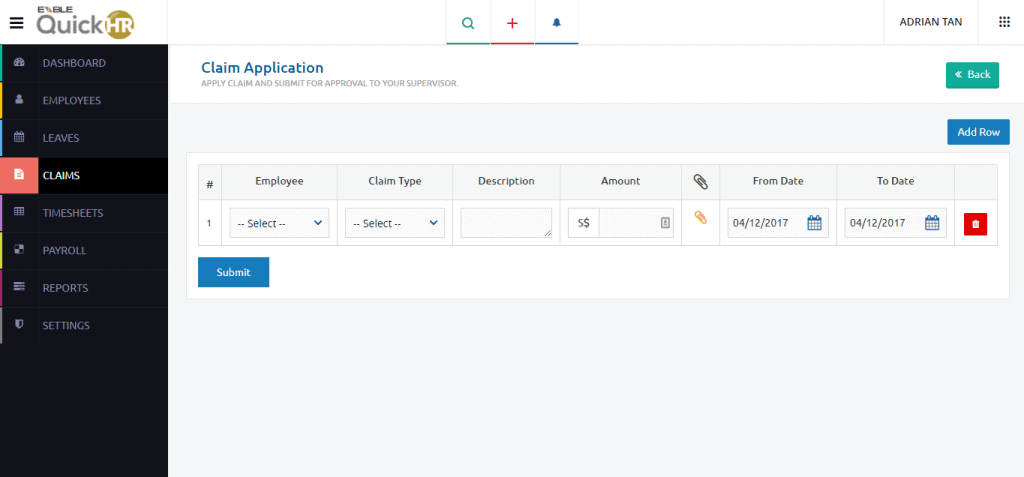

Through integration with your existing biometric system or mobile app, employee timesheet can be generated with a click.
All the data entered into the system can be generated in the form of a report, making information retrieval and decision-making much quicker.

As with all SaaS system, any regulatory changes (CPF rates change, income tax, etc) will automatically be updated seamlessly.
Adding to that, customers can be assured of data protection via Secure Sockets Layer (SSL). In layman’s terms, it means that their system employs three levels of encryption that is of the highest levels.The current version allows employees to access their payslips in English, Mandarin, Malay and Tamil and see their leaves balance all in one go too.
QuickHR (under parent company Enable Business Pte Ltd) also just annouced their inclusion as official IRAS Payroll Vendor for YA2018.
Pricing
QuickHR has two plans at the moment- Basic and Essential.
SGD5 per employee per month for the Basic plan and SGD10 per employee for the Essential plan with no additional charges.
For companies with a larger headcount, packages will be customized and priced accordingly to fit their needs.
Automating one SME at a time
Their first customer came about when someone from the company spotted their bus-stop advertisement. A presentation was made and the deal was sealed there and then.
That speaks volume of what the customer saw and liked.
I just hope they would include a chat tab on the dashboard. This would help SMEs and their users resolve issues quickly (pun intended) and provide excellent customer support and engagement.

